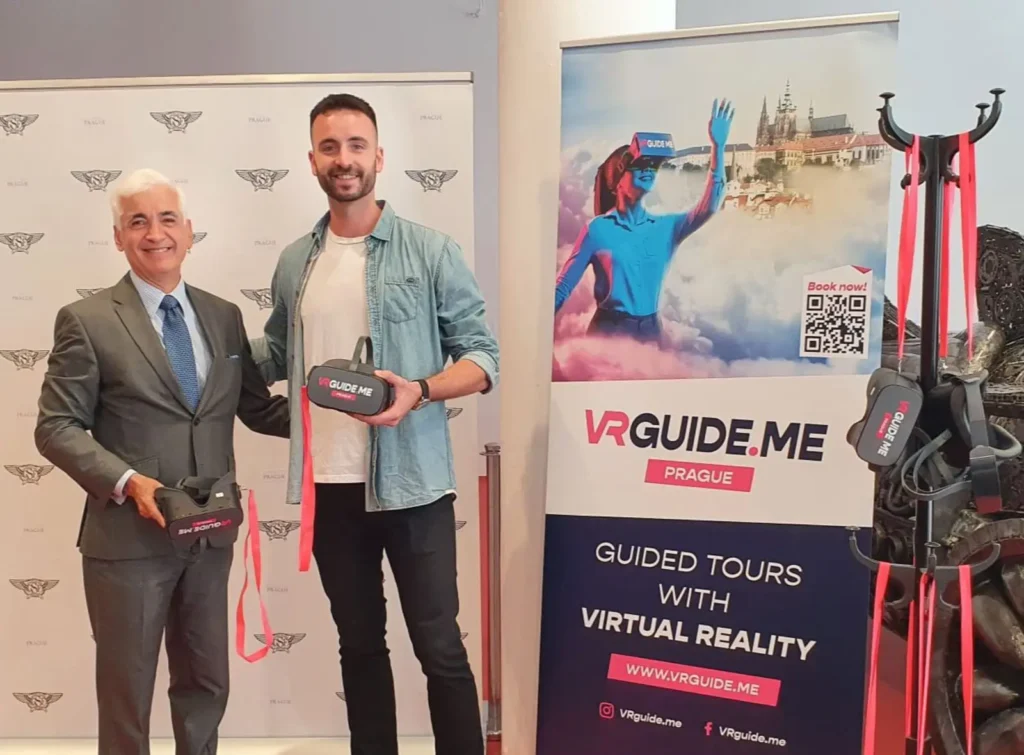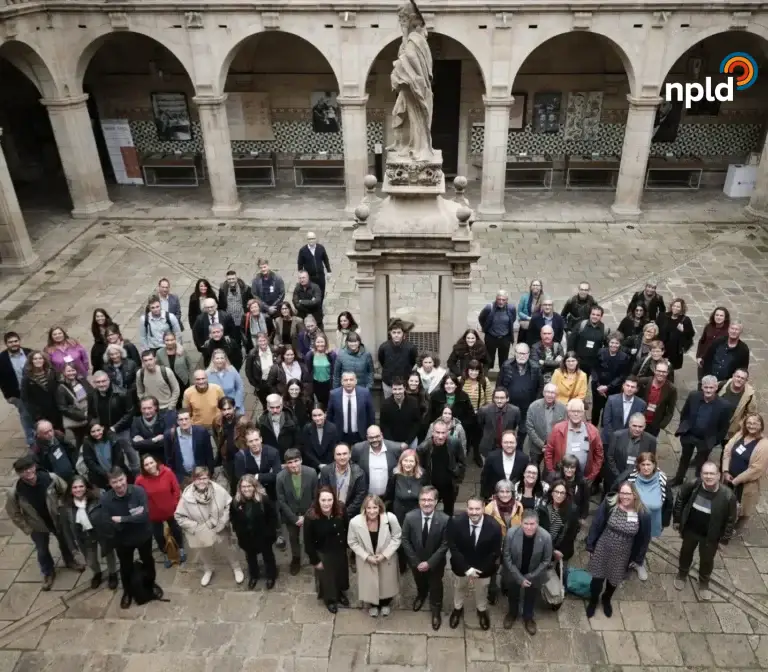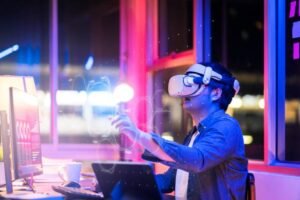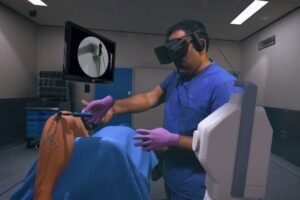Inicio » Virtual Reality » Avatar Virtual Reality: The technology that transforms the video game experience
Avatar Virtual Reality: The technology that transforms the video game experience
Virtual reality avatars are digital representations of users in the virtual world. These 3D figures allow users to interact in the virtual world in a more personalized and realistic way. Avatars can be customized with different characteristics, such as appearance, clothing and accessories, allowing users to create a unique identity in the virtual world.
Creating a virtual reality avatar can be an exciting and creative experience.
Users can choose from a wide variety of customization options to create an avatar that suits their personal preferences.
In addition, avatars can be used in a variety of virtual reality platforms, including games, applications and virtual worlds.
Avatars can also be used to represent users in virtual meetings and online events, allowing users to interact in a virtual environment in real time.
Would you like to apply virtual or augmented reality? At Virtual Arena we are specialists in consulting and development of immersive projects for companies and institutions.
Definition of Avatar virtual reality
History
An avatar is a graphical representation of a person or character in a virtual world. The idea of avatars dates back to the 1970s, when they were first used in online role-playing games. Since then, avatars have been used in a wide variety of applications, including video games, virtual worlds, social networking and virtual reality applications.
Functioning
In virtual reality, avatars are visual representations of users in a virtual world. Users can customize their avatars to look like them or to have a completely different appearance. Avatars can be controlled by users to interact with the virtual environment and with other avatars.
Avatars are used in a variety of virtual reality applications, including video games, training applications and training simulations. Avatars are also used in virtual reality applications for online communication and collaboration. For example, avatars can be used in virtual meetings so that participants can interact with each other in a virtual environment.
In short, avatars are graphical representations of users in a virtual world. Users can customize their avatars to look like them or to have a completely different appearance. Avatars are used in a variety of virtual reality applications for communication, collaboration and interaction with the virtual environment.
Avatar virtual reality applications
Today, virtual reality avatars are used in a variety of applications, from education to healthcare to entertainment.
Some of the most common applications of virtual reality avatar technology are described below.
Education
Virtual reality avatars have become an increasingly popular tool in education. Teachers can use avatars to create virtual environments that allow students to explore complex concepts in an interactive and visual way. For example, a biology teacher can use an avatar to create a virtual environment that simulates the human body and allows students to explore the different organs and systems of the body.
Entertainment
Entertainment is one of the most popular applications of virtual reality avatar technology. Avatars are used in video games and virtual worlds to allow users to interact with other players and explore virtual environments. For example, in the game VRChat, players can create their own avatar and use it to interact with other players in a virtual world.
Health
Virtual reality avatars are also used in healthcare to help patients better understand their health conditions and available treatments. Physicians can use avatars to create virtual environments that allow patients to explore the human body and better understand their medical condition. In addition, avatars are also used in virtual therapy to help patients overcome phobias and anxiety disorders.
In summary, virtual reality avatars have a wide variety of applications in different fields, from education to health and entertainment. With the advancement of technology, new applications are likely to be developed in the future.
Development of 3D Avatars for virtual reality
Virtual reality avatars are virtual characters that represent users in a virtual environment. The development of avatars in virtual reality is divided into two main parts: design and programming.
Design
Avatar design in virtual reality involves the creation of 3D models that represent users. Designers must take into account several factors when creating avatars, such as the appearance, personality and skills of the characters.
To create avatars, designers use 3D modeling software such as Blender, Maya and 3DS Max. These programs allow designers to create detailed and realistic 3D models that can be used in virtual environments.
In addition, designers can also use 3D scanning to create avatars that look like real users. 3D scanning uses structured light technology or photogrammetry to create accurate 3D models of users.
Programming
Virtual reality avatar programming involves creating behaviors and animations for virtual characters. Programmers use programming languages such as C++, C# and Java to create behaviors and animations for avatars.
Avatar behaviors can be programmed to perform actions such as walking, running, jumping and talking. Animations can be used to express emotions and feelings of the virtual characters.
In addition, programmers can also use artificial intelligence to create avatars that can interact with users and other virtual characters. Artificial intelligence can be used to create avatars that can learn and adapt to different situations in a virtual environment.
In summary, avatar development in virtual reality is a complex process that involves both the design and programming of virtual characters. Designers and programmers work together to create avatars that are realistic, expressive and able to interact with users in a virtual environment.
Benefits and Challenges
Advantages
Virtual reality offers numerous advantages in a variety of fields, including education, training, entertainment and medicine. In education, virtual reality allows students to immerse themselves in immersive environments that replicate real-world situations without the associated risks. In this way, students can acquire practical skills and knowledge more effectively.
In training, virtual reality is also very useful. For example, pilots can use virtual reality flight simulators to practice emergency situations and improve their skills without risking their lives or those of passengers. In addition, virtual reality also offers immersive experiences in entertainment, such as video games and movies.
In medicine, virtual reality is used for the treatment of psychological disorders, such as post-traumatic stress disorder and anxiety. Patients can confront and overcome their fears in controlled and safe environments, allowing them to recover more quickly.
Challenges
Despite the benefits of virtual reality, it also presents some challenges. One of the main challenges is the cost of the devices and technology needed to create and reproduce virtual reality experiences. In addition, virtual reality can cause motion sickness and other side effects in some people, limiting its use in certain cases.
Another challenge is the lack of regulation and standards in the virtual reality industry. This can lead to the creation of low-quality or even dangerous experiences for users. In addition, privacy and security of user data are also major concerns in virtual reality.
In summary, virtual reality offers numerous benefits in various fields, such as education, training, entertainment and medicine. However, it also presents significant challenges, such as cost, side effects, and lack of regulation and standards.
The Future of Avatars in Virtual Reality
Virtual reality technology has advanced significantly in recent years, and virtual reality avatars have been an integral part of its growth. In this regard, the future of virtual reality avatars is promising. Here are some trends and innovations that are expected in the near future.
Trends
- Greater realism: Virtual reality avatars are getting closer and closer to resembling real people. Companies are investing in technologies that enable motion capture and the creation of more accurate 3D models. This will allow avatars to be more realistic and feel more like an extension of the user.
- Increased customization: Avatars in virtual reality are evolving toward greater customization. Instead of choosing from a limited set of customization options, users will be able to create avatars that look like themselves or anyone they wish. This will increase the sense of immersion and emotional connection with the avatar.
- Increased interaction: Avatars in virtual reality are evolving towards greater interaction. Users will be able to interact with other avatars in a more fluid and natural way, increasing the sense of presence and emotional connection with other users.
Innovations
- AI-based avatars: AI-based avatars in virtual reality are an exciting innovation expected in the near future. These avatars will be able to learn and adapt as they interact with users, which will increase the sense of realism and emotional connection with the avatar.
- Haptic avatars: Haptic avatars are another exciting innovation expected in the near future. These avatars will be able to provide haptic feedback to the user, which will increase the sense of immersion and emotional connection with the avatar.
- Multiplatform avatars: Cross-platform avatars are an innovation that is already underway. These avatars will allow users to take their avatar from one platform to another without having to recreate it from scratch. This will increase the sense of continuity and emotional connection to the avatar.
In conclusion, the future of avatars in virtual reality is exciting and promising. Technological advances in motion capture, artificial intelligence, haptic feedback and personalization will allow avatars to become more realistic and feel more like an extension of the user.

More information about avatars with virtual reality
What is an avatar in virtual reality?
An avatar in virtual reality is a graphical representation of a user in a virtual environment. It is the way users interact with the virtual world and with other users. Avatars can be customized to resemble the user or they can be completely different.
How to make my virtual reality avatar?
To create a virtual reality avatar, it is necessary to use a virtual reality platform such as Horizon Worlds or Meta’s Workrooms. These platforms offer tools to customize the avatar, such as the selection of appearance, clothing and accessories.
What is an avatar in the metaverse?
An avatar in the metaverse is similar to an avatar in virtual reality, but it is used in a larger, connected environment. The metaverse is a shared virtual space where users can interact and create content.
How to make a metaverse avatar?
To create a metaverse avatar, users can use platforms such as Meta or Second Life. These platforms offer tools to customize the avatar and create content in the metaverse. Users can create avatars that look like themselves or are completely different.
How do I create my Horizon profile?
To create a profile in Horizon Worlds, users must have a Facebook account and download the Horizon app on their virtual reality device. Once logged into the app, users can create their profile and customize their avatar.
What are Meta Avatars?
Meta Avatars are virtual reality avatars created by Meta, the company behind the Oculus virtual reality platform. Meta Avatars can be used in several virtual reality platforms, including Horizon Worlds and Workrooms. Users can customize their Meta Avatar to look like them or to be completely different.
Share note:
Recent articles
Contact with experts
Looking to create a project with immersive technologies?
At Virtual Arena we are professionals in creating digital experiences.
Do you have a project in mind?
Related articles








